I'll craft an immersive section that transforms the garden into an artistic maritime experience. The installation will blend sculptural elements with coastal plantings, creating a unique visual narrative that captures the essence of seaside landscapes. I'll incorporate weathered materials, marine-inspired sculptures, and strategically placed artwork that complements the natural coastal environment.Coastal gardens offer unique opportunities to create stunning outdoor spaces that celebrate the natural beauty and resilience of seaside environments. Whether you live directly by the ocean or simply want to capture that breezy, weathered aesthetic, these design ideas embrace the challenges of salty air, strong winds, and sandy soil while creating functional, beautiful landscapes. From storm-resilient coastal plants to weathered materials and nautical elements, each approach combines practical solutions with aesthetic appeal. These coastal garden concepts focus on low-maintenance designs that withstand harsh conditions while providing year-round interest, utilizing plants and materials that naturally thrive in challenging seaside conditions to create spaces that are both stunning and sustainable.
1. Coastal Garden Windbreak Design
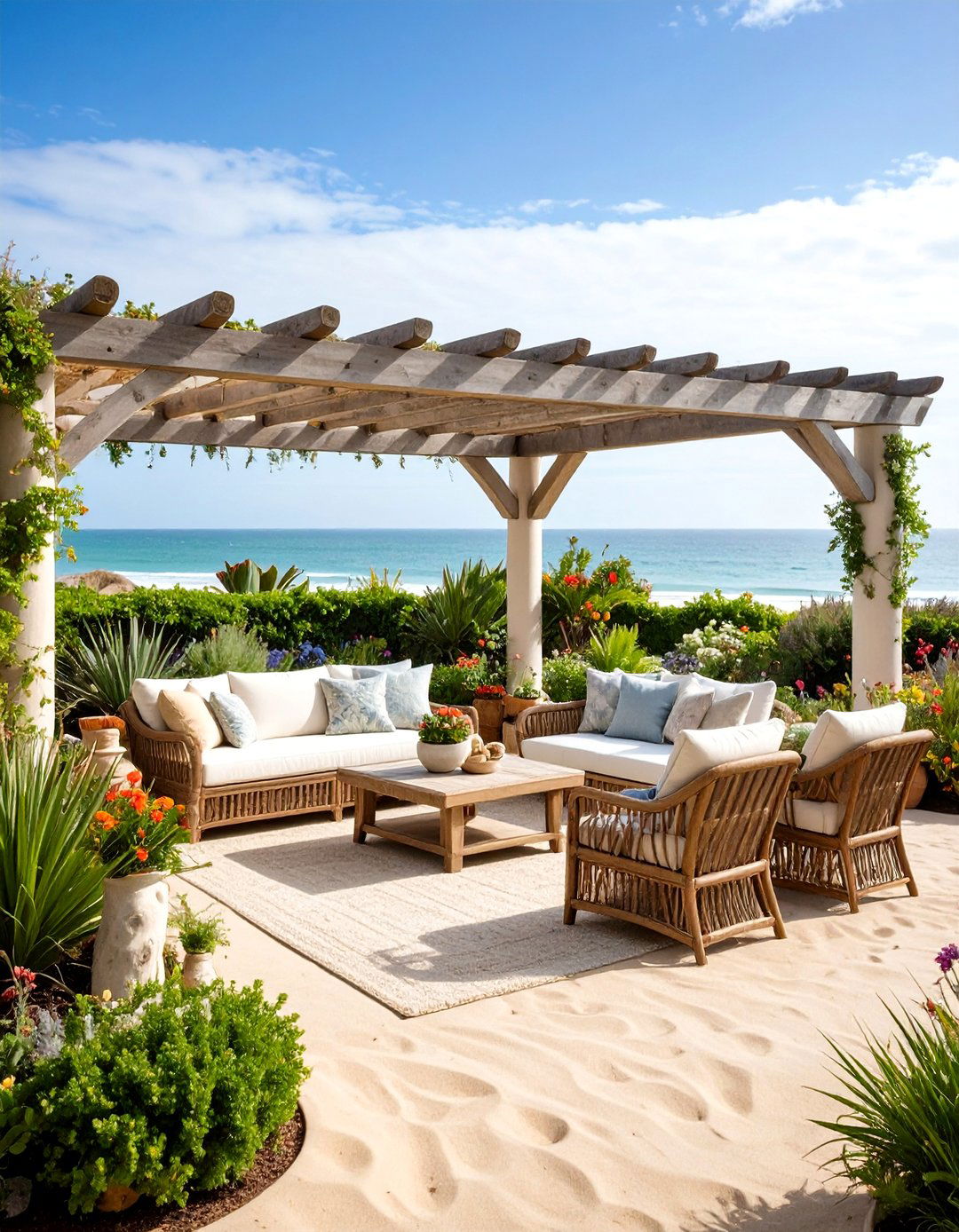
Creating effective windbreaks forms the foundation of successful coastal garden design. A taller windbreak can be implemented with a row of medium to tall trees, then a row of lower growing shrubs and finally a row of really low or dwarf shrubs closest to the residence. This tiered approach provides comprehensive wind protection while maintaining visual appeal. Traditional choices include Pinus radiata (Monterey Pine) for speed of growth and ability to withstand salt sprays, combined with Quercus ilex (evergreen oak) which cuts out wind from top to bottom. Consider using permeable barriers rather than solid fencing, as the goals are to buffer the winds rather than blocking them, screen any unpleasant views, frame good views and provide shaded space. Strategic windbreak placement creates protected microclimates for more delicate plantings.
2. Coastal Garden Gravel Pathways

Gravel gardens are perfect for drought-tolerant planting, customizable to suit personal style by changing the colour and size of stones. Coastal garden gravel pathways mimic natural beach textures while providing excellent drainage and wind resistance. Crushed shell paths provide a tactile and visual connection to the seaside, similar to a beach's texture. Choose locally sourced materials for authenticity and cost-effectiveness. Craft coastal-inspired garden paths using wooden boards, gravel, pebbles, or crushed shells to create the feeling of walking along the beach. These materials require minimal maintenance and naturally complement coastal plantings. Create paths from stepping stones and use thyme or stonecrop as low ground cover around paths for added interest. The permeable nature of gravel paths prevents water runoff issues common in coastal environments.
3. Coastal Garden Salt-Tolerant Perennial Borders
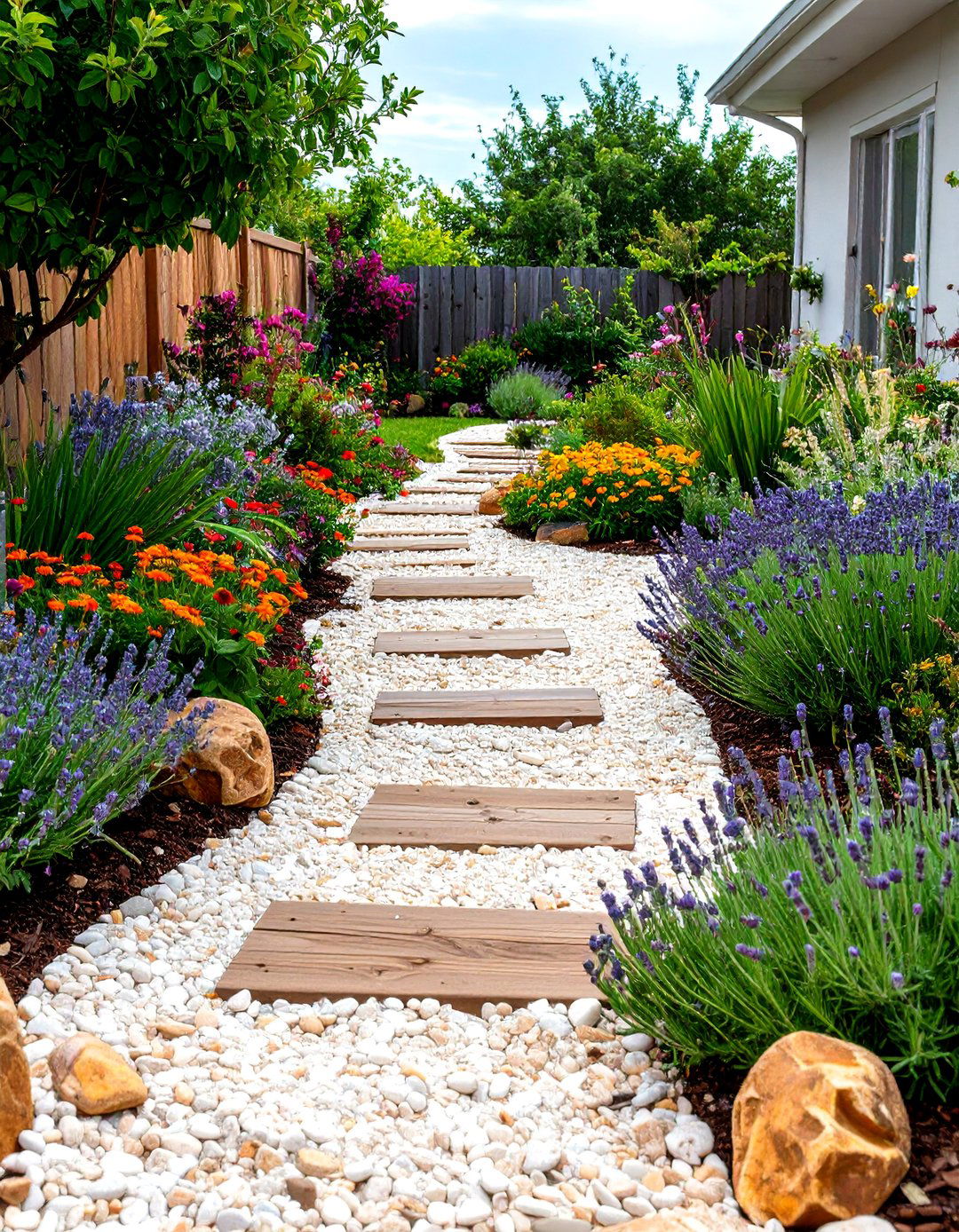
Building resilient perennial borders requires selecting plants adapted to saline conditions and strong winds. Sea holly brings architectural interest with spiny, silver-blue foliage and thistle-like flowers in vivid steel-blue, while growing 1-2 feet tall with excellent drought tolerance. Sedum Autumn Joy offers moderate salt tolerance with fall blooms beloved by bees, easily divided and transplanted. Gaillardia (blanket flower) provides nonstop blooms from summer to frost, attracting butterflies while thriving in sandy, salty soils. Perennials that tolerate moderate salt levels include gaillardia, aquilegia, nepeta, achillea, dianthus and campanula. These hardy selections create colorful, long-lasting displays that improve with each growing season while requiring minimal water and maintenance once established.
4. Coastal Garden Driftwood Features

Driftwood, with its sun-bleached and weathered appearance, embodies the spirit of the coast and offers versatile applications. Transform collected pieces into sculptural focal points, natural plant containers, or rustic furniture. Use driftwood and weathered wooden accents to create garden borders, benches, or standalone decorative pieces, lending authenticity to your seaside haven. Hollowed driftwood serves as containers for air plants or succulents, while larger pieces can be fashioned into benches, tables, or swings. Position statement pieces strategically throughout the garden to create visual anchors. Piled-up driftwood makes snug homes for small creatures, adding ecological value alongside aesthetic appeal. The naturally weathered appearance integrates seamlessly with coastal plantings while requiring no maintenance.
5. Coastal Garden Raised Bed Systems

Raised garden beds are typical of coastal style and provide solutions for poor soil conditions while working well on sloping coastal plots. Elevated planting areas improve drainage, prevent salt accumulation, and create warmer growing conditions for vegetables and flowers. Look to reclaimed timbers from local reclamation yards, or local stone from quarries, working with materials that function well in the area. Consider using recycled agricultural feeding troughs or old, reclaimed boat hulls to enhance the nautical theme. Design varying heights to create terraced effects that echo natural coastal topography. Large rocks, groundcovers, and sturdy raised beds work together to reduce water loss and erosion, particularly valuable on sloped sites. Fill with improved soil mixes that drain freely while retaining some moisture.
6. Coastal Garden Ornamental Grass Display

Ornamental grasses provide essential structure and movement that captures the essence of coastal environments. Ornamental grasses add movement and texture to outdoor spaces, emulating ocean ripples while preventing soil erosion with their fibrous root systems. Sea oats create dramatic visuals with distinctive seedheads dancing in coastal breezes, growing 3-6 feet tall with extensive root systems for dune stabilization. Sea oats bear unique seed plumes that dance in the breeze with attractive bronze fall foliage. Choose varieties like Saltmeadow cordgrass, muhly grass, and Fakahatchee grass for their salt tolerance and Florida native status. Plant in naturalistic drifts rather than formal rows to mimic wild coastal grasslands. These low-maintenance selections provide year-round interest and habitat value.
7. Coastal Garden Water Feature Integration
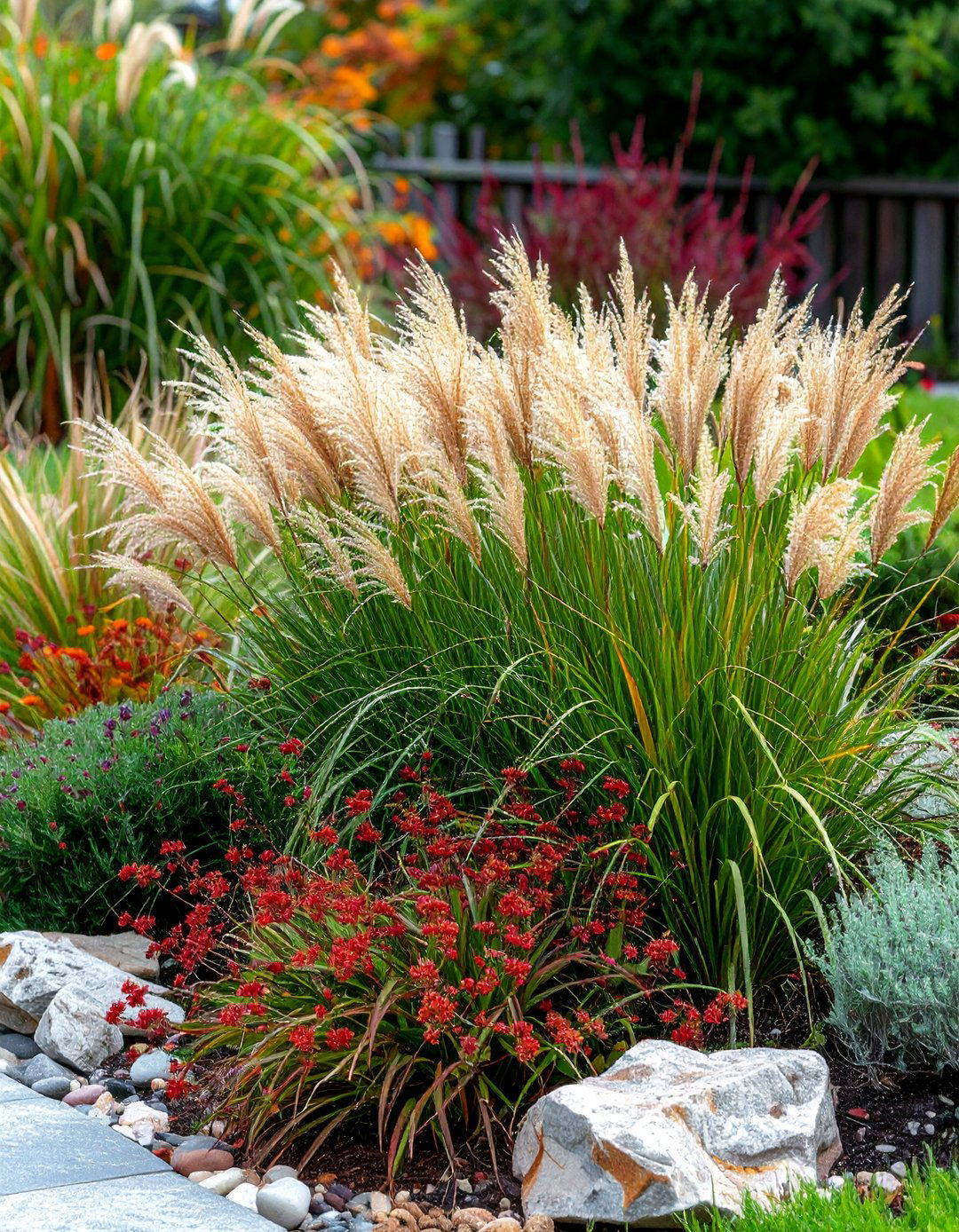
Water features such as fountains, ponds, or streams create tranquility and mimic soothing ocean sounds while providing wildlife habitat. Design water elements using natural materials like stone or wood to complement seaside themes. A fountain may capture and recycle water, with raised ponds enhancing water-wise gardens. Position features to reflect sky and create visual connections with distant water views. Consider salt-resistant materials for pumps and fixtures in direct coastal exposure. Simple basin fountains work well, requiring minimal maintenance while providing the sound of moving water. The soft sounds of moving water reinforce the coastal vibe, whether from babbling brook-style fountains or larger ponds reflecting the sky. Incorporate aquatic plants that tolerate occasional salt spray for enhanced naturalism.
8. Coastal Garden Maritime Container Display
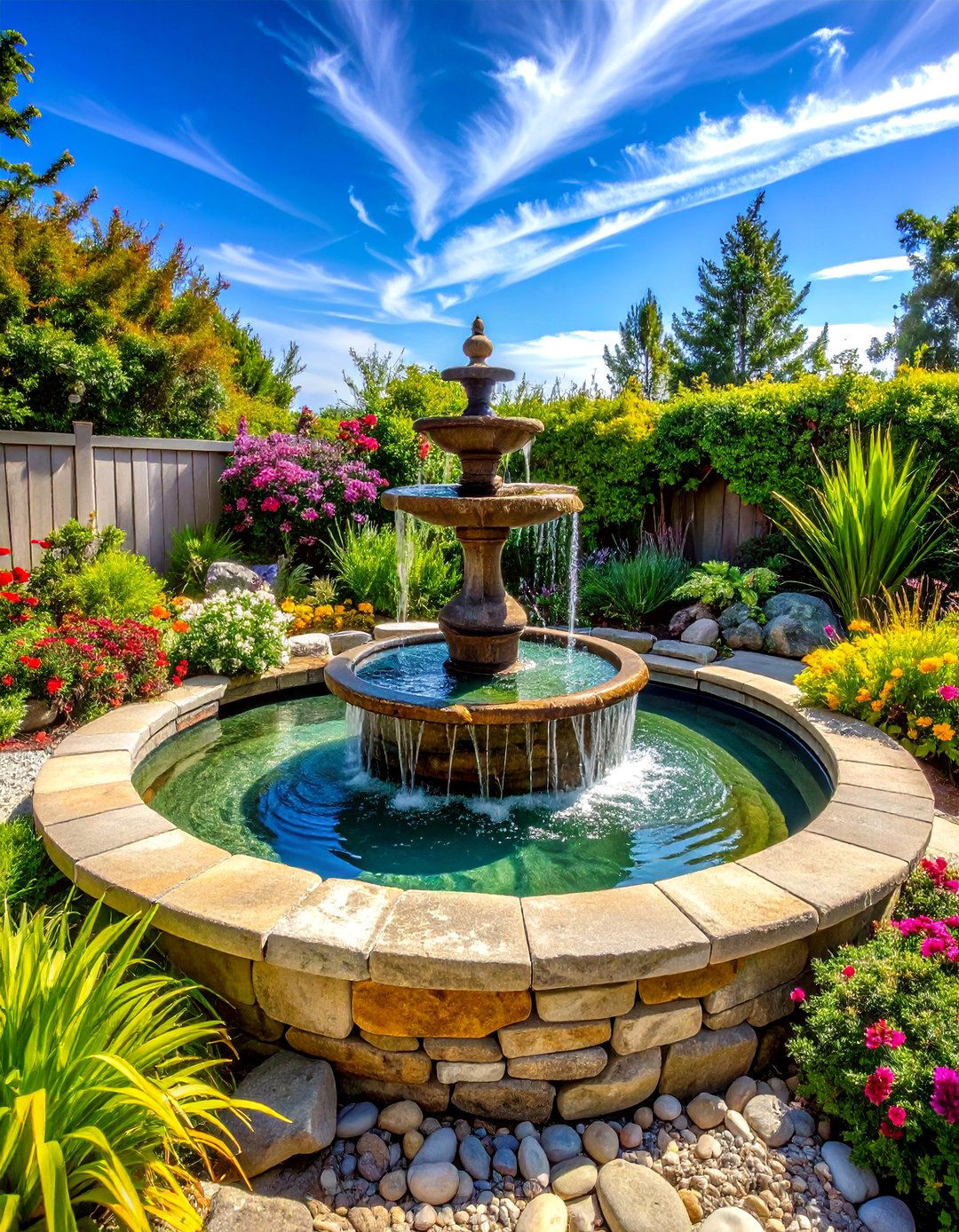
Container gardening offers flexibility for coastal environments where soil conditions challenge traditional planting. Pots layered on shelves include agricultural feeders, old olive tins, terracotta pots, galvanised troughs creating varied displays. Choose weather-resistant materials like galvanized metal, stone, or ceramic that withstand salt air. Plant agaves in containers to move around and keep dry, as they don't like wet conditions but provide tropical coastal appeal. Group containers of varying heights and materials for visual interest. Arrange plants in decorative pots with driftwood, shells, and other seaside decoration for extra charm. Use maritime-themed containers like old lobster pots, fish crates, or boat planters. Group containers close together to create shelter, suitable for balconies and yards while providing wind protection.
9. Coastal Garden Xerophytic Rock Garden
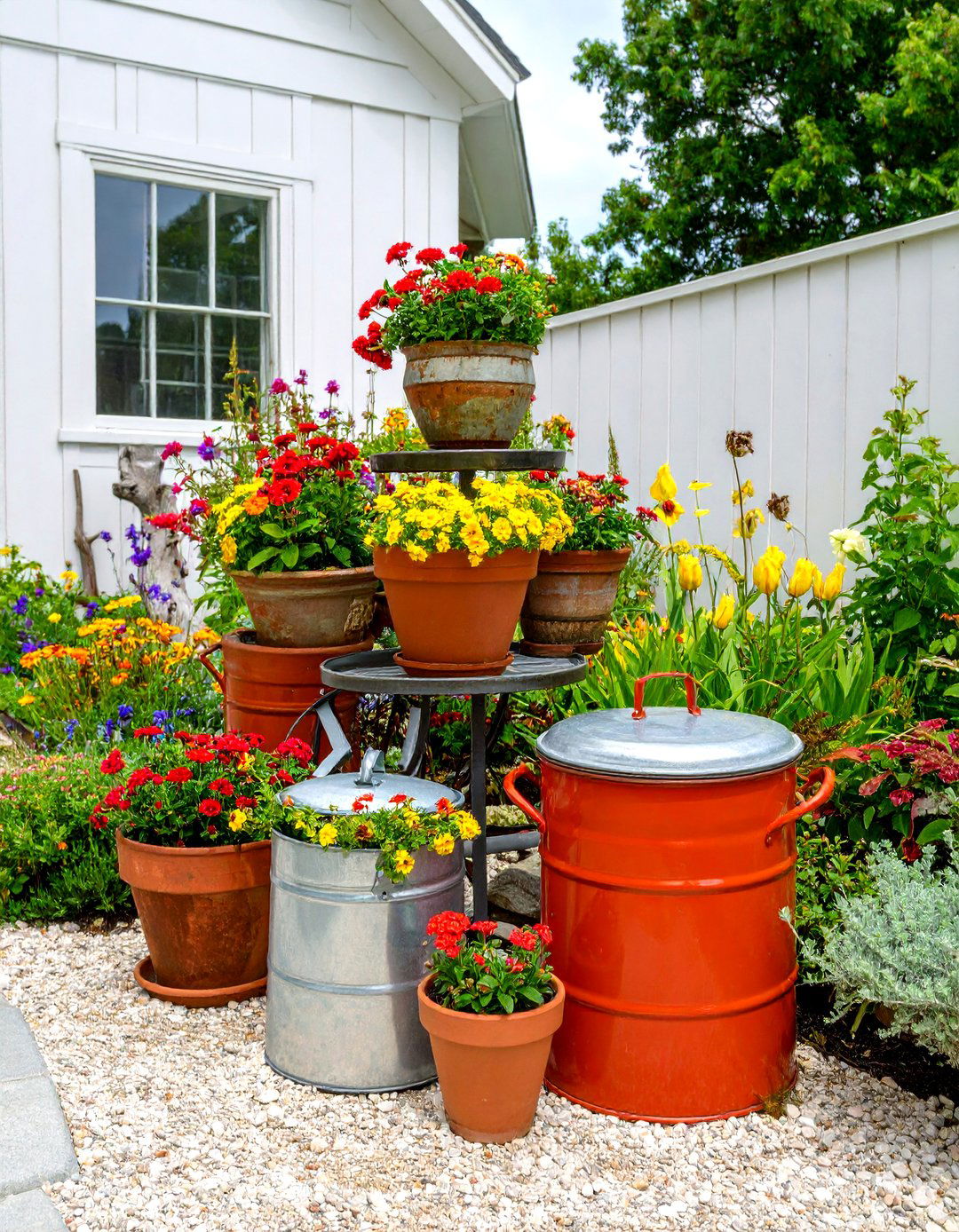
Rocky coastal garden areas showcase drought-adapted plants that thrive in challenging conditions. Prickly pear cactus with flat, paddle-like stems and yellow blooms makes an excellent choice for rock gardens along seashores, being highly drought-tolerant yet cold-hardy. Create gravel gardens by planting into locally sourced gravel or shingle with drought-tolerant selections, recreating the natural feel of plants growing from sand and shingle. Sandy soil gardens benefit from lavender, hardy geranium, buddleja, eryngium (sea holly) and verbena - colorful perennials attracting pollinators. Incorporate native stone boulders as natural focal points and seating areas. Plants with gray or silver foliage like santolina, lamb's ear, lavender, and Russian sage exhibit excellent drought tolerance. Layer plants by height and water needs for natural appearance.
10. Coastal Garden Nautical Lighting Scheme

Illuminate seaside gardens with coastal-inspired lighting like lanterns, festoon lights, or solar-powered lighthouse statues, providing ambience while highlighting key features. Choose fixtures with nautical or beachy designs to enhance maritime themes. Nautical lanterns and soft lighting, including string lights, provide gentle illumination perfect for long summer evenings. Use marine-grade materials that resist salt corrosion for longevity. Solar-powered options reduce maintenance while providing sustainable illumination. Make sure metal fixtures and fittings won't corrode with salt-laden winds - marine grade stainless steel light fittings work best. Position lights to illuminate pathways safely while creating magical evening ambiance. Lantern-style fixtures on posts evoke lighthouse beacons, while rope lights wrapped around pergolas or trees add festive coastal atmosphere.
11. Coastal Garden Beach-Style Decking
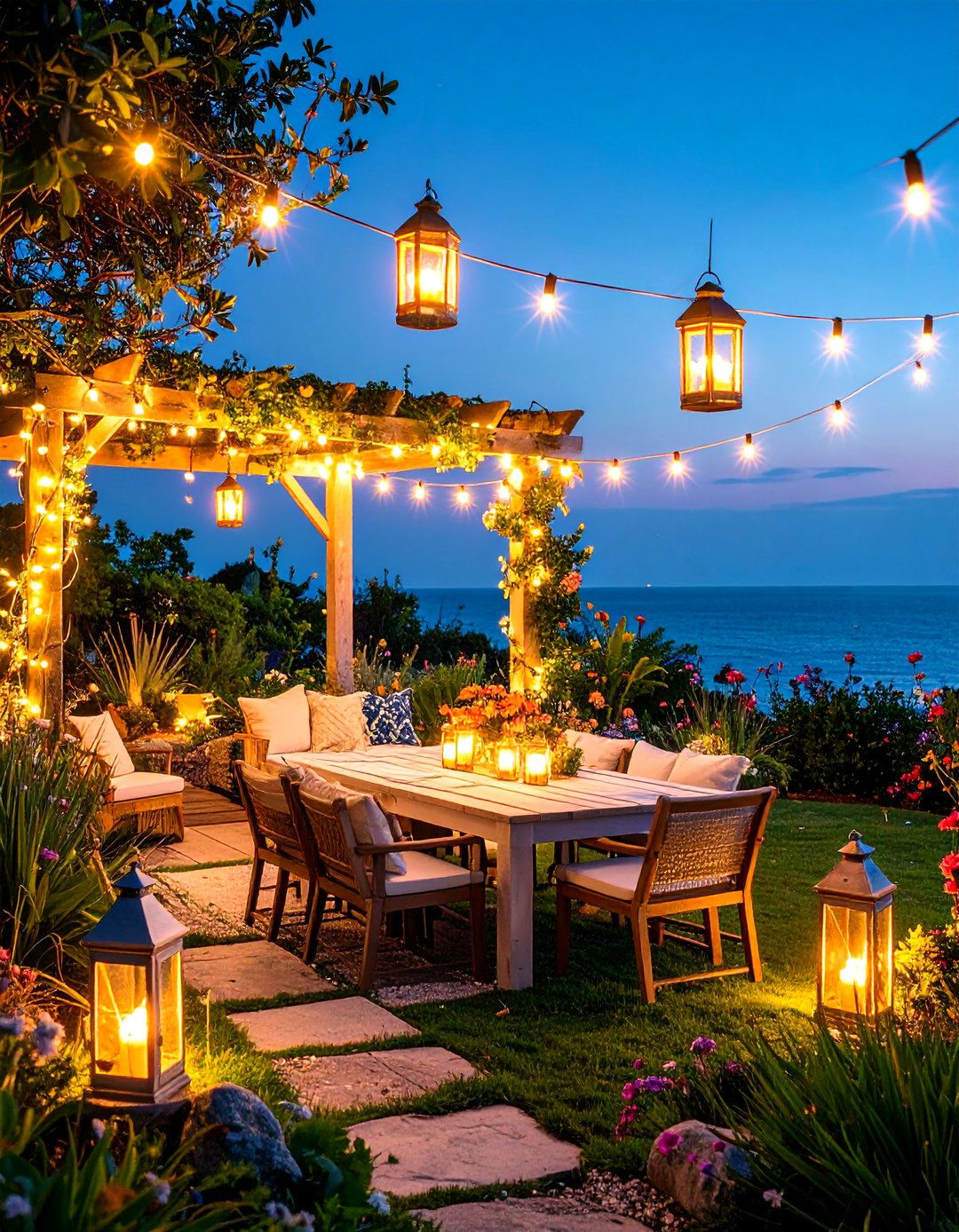
Wooden decking works well in sunny spots with wonderful coastal vibes when left to weather and silver naturally. Design multi-level decks to take advantage of different views and provide varied outdoor living spaces. Decking works perfectly for sloping gardens, set at different levels to enjoy different views. Choose naturally durable hardwoods that age gracefully in salt air. Use hardwood, ensure it isn't slippery, and that it will last, using marine grade stainless steel for all hardware. Consider composite materials for low maintenance if natural weathering isn't desired. Create seamless transitions between indoor and outdoor spaces. Design built-in seating and planters to maximize functionality. Weathered wood decking using reclaimed timber provides a sun-bleached, natural feel characteristic of coastal environments.
12. Coastal Garden Native Plant Sanctuary
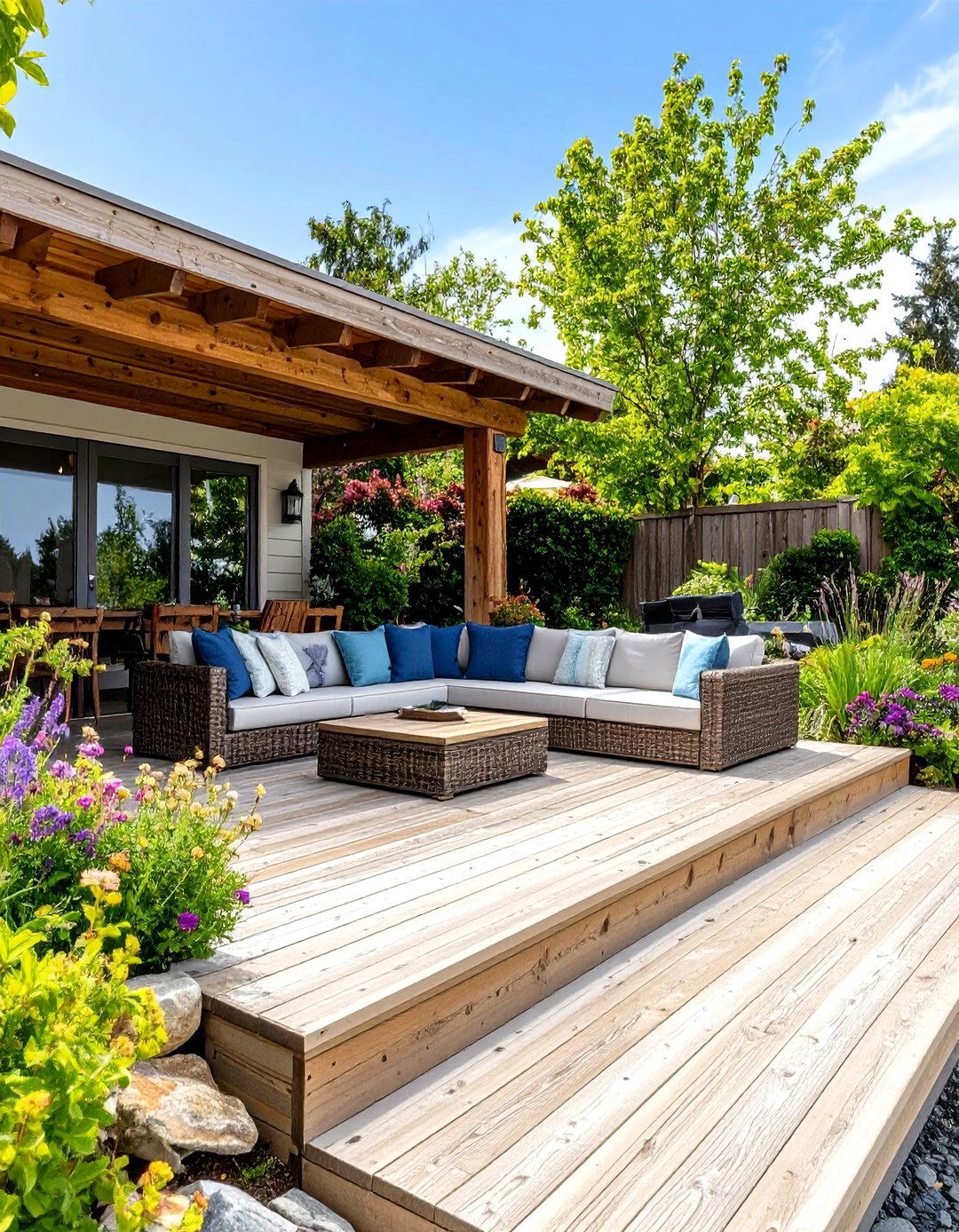
The best option for coastal gardens is local native plants, which tolerate conditions better while saving time and money. Research indigenous species that naturally occur in your coastal region for authentic, low-maintenance gardens. Beach sunflower, gaillardia, and seaside goldenrod are wind and salt tolerant options that brighten ocean views. Native plants support local wildlife while requiring minimal inputs once established. Railroad vine and gopher apple spread quickly, making excellent groundcovers and dune stabilizers. Create habitat corridors that connect to natural coastal ecosystems. Choose plants that provide year-round interest through varied bloom times, foliage textures, and seasonal changes. Native plant gardens demonstrate environmental stewardship while celebrating regional character. Group species according to natural plant communities for authentic appearance and improved growing success.
13. Coastal Garden Seashell Path Design
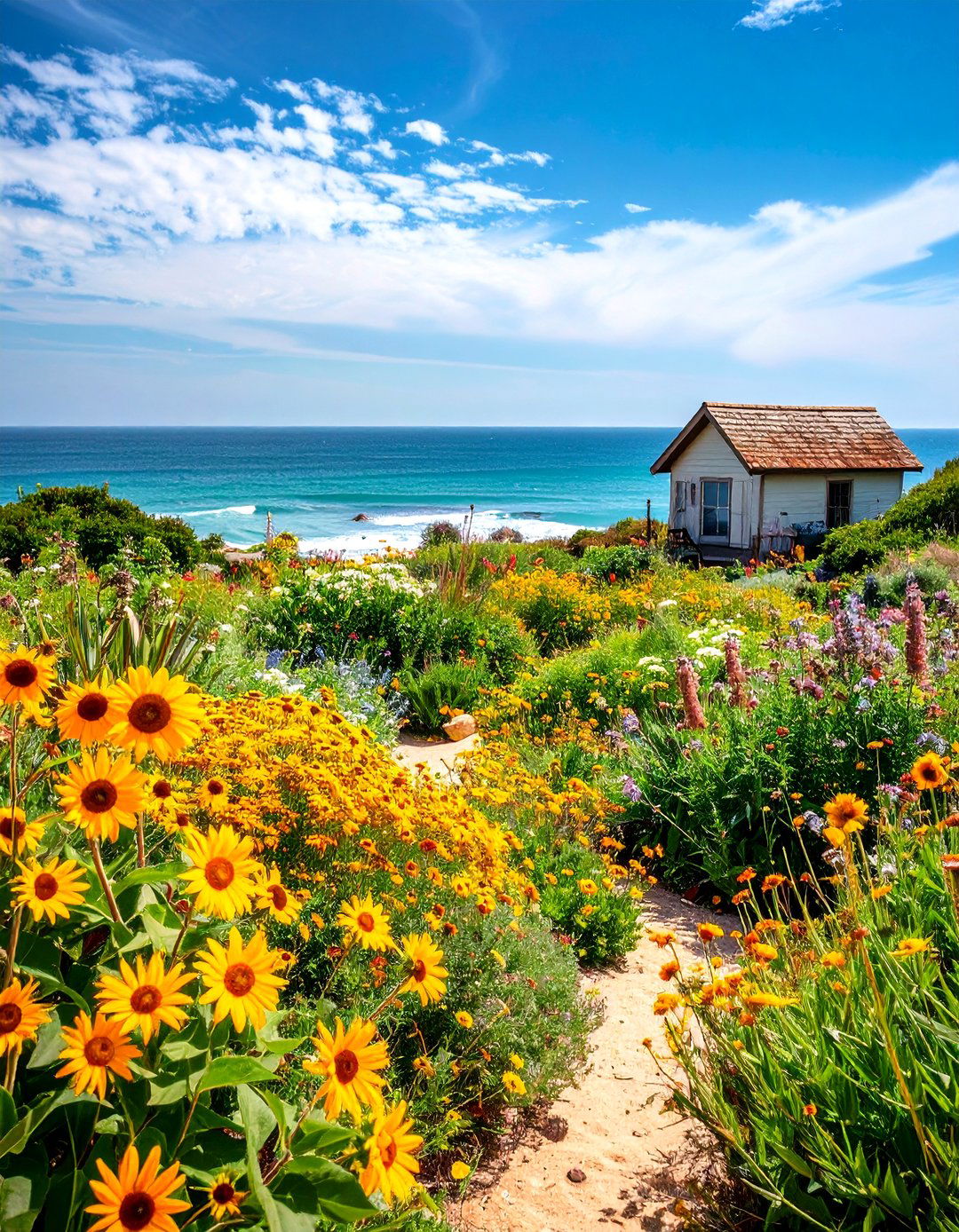
Seashell paths can be created using seashell mulch, a byproduct of the seafood industry that breaks down naturally over years. Design winding pathways that echo natural beach contours while providing firm walking surfaces. Crushed seashell pathways provide tactile and visual connections to the seaside with beach-like textures. Source shells responsibly from seafood processing facilities rather than collecting from beaches. However, you are not legally allowed to take stones, pebbles or other material from beaches. Mix shell sizes for varied texture and improved compaction. Edge pathways with weathered timber or natural stone for definition. The white and cream colors of shells brighten shaded areas while reflecting light. Use curved pathways to create mystery and encourage exploration throughout the coastal garden.
14. Coastal Garden Succulent Collection
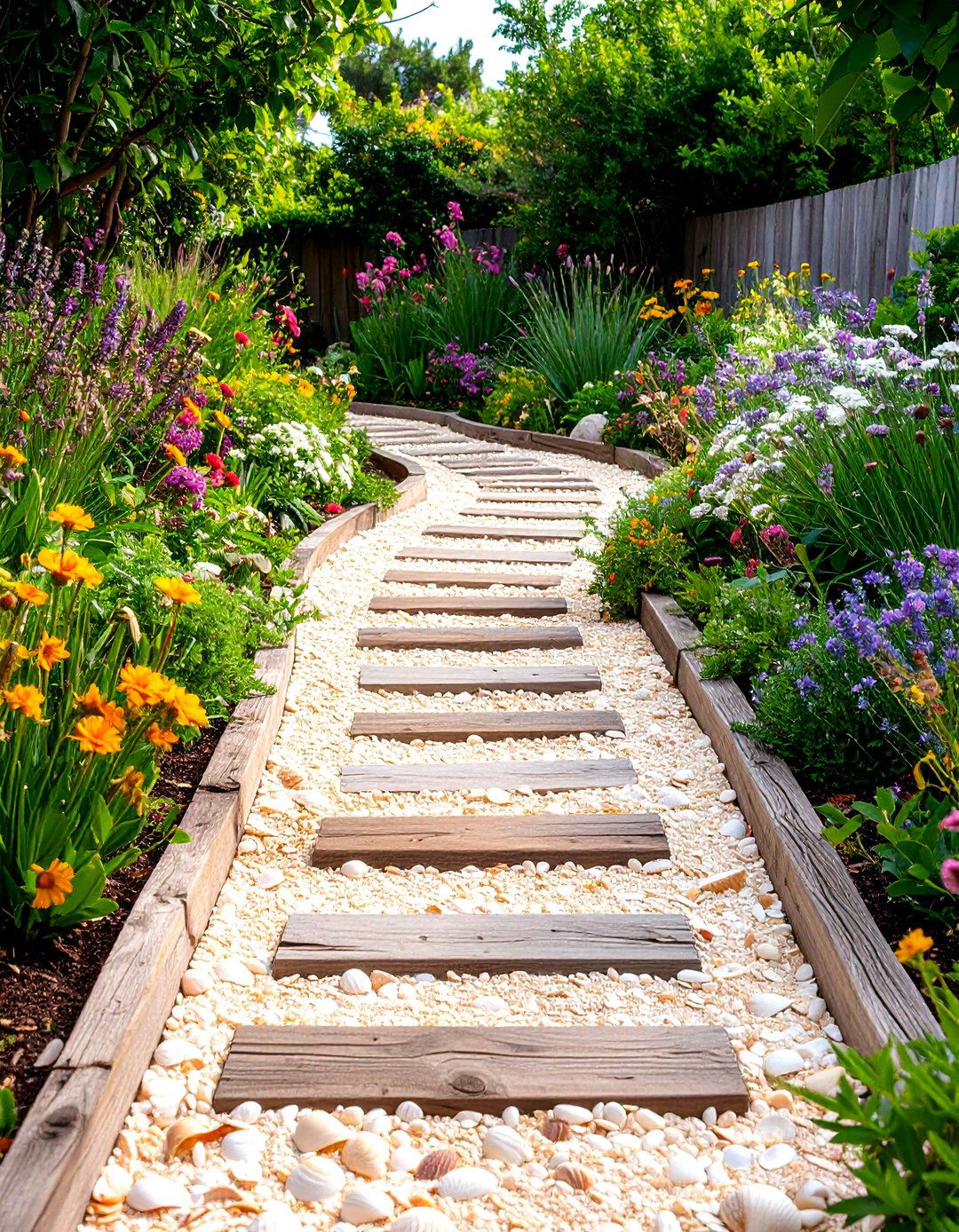
Succulents naturally excel in coastal conditions due to their water-storing capabilities and salt tolerance. Agaves add tropical feel to coastal gardens, with proper container growing allowing protection during wet winter months. Choose Mediterranean plants like santolina with silvery-grey foliage and button-like yellow flowers, being drought-tolerant and ideal for adding contrast. Create dramatic focal points with architectural specimens like century plants and barrel cacti. Many plants with gray or silver foliage exhibit excellent drought tolerance, including varieties perfect for coastal conditions. Design raised beds or container displays that showcase varied textures, forms, and colors. Group according to water and light requirements for easy maintenance. Arrange succulents in decorative pots with driftwood and shells for authentic seaside charm. These low-maintenance plants provide year-round structure and interest.
15. Coastal Garden Weathered Fence Integration
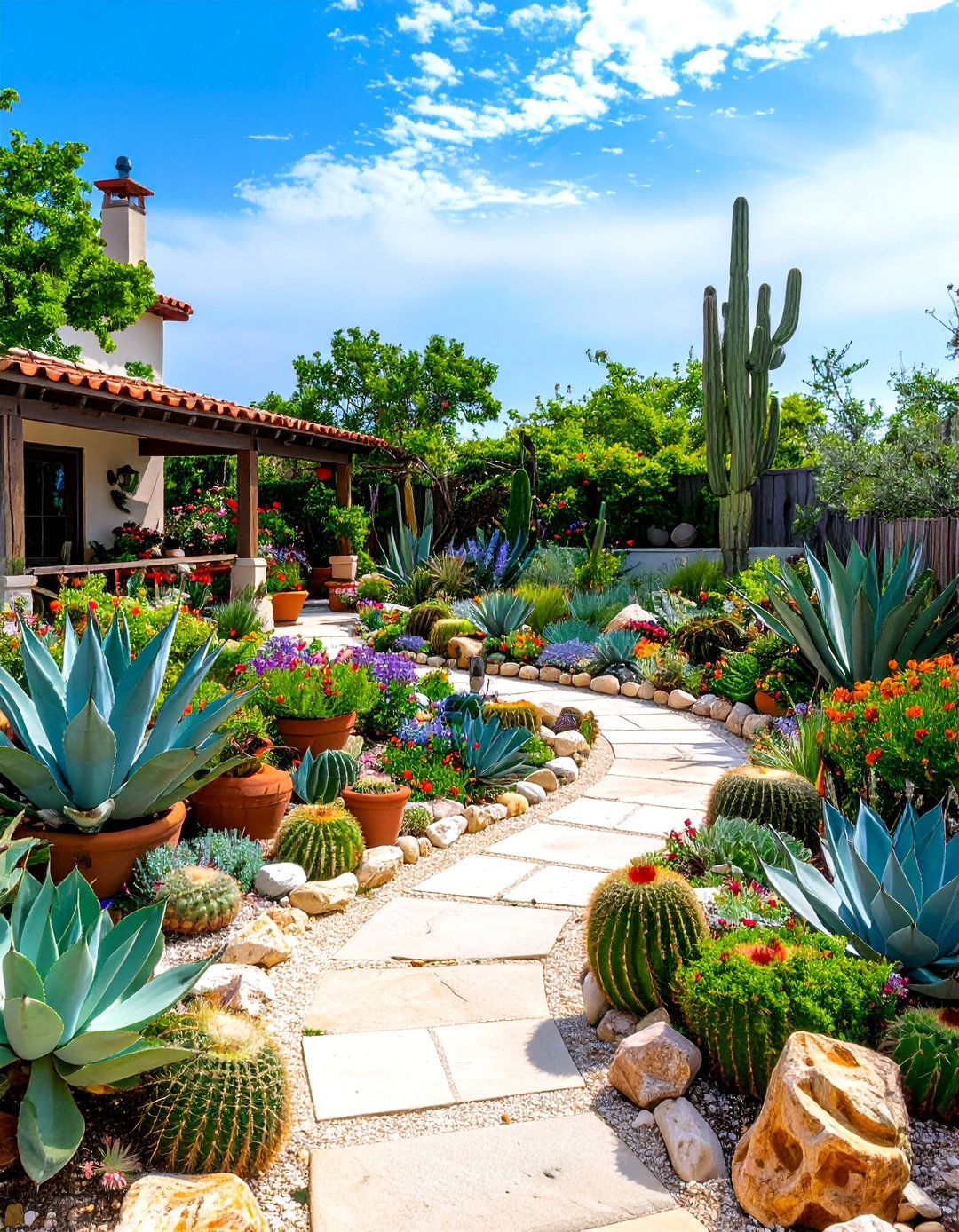
Paint all garden fittings white - sheds, fences, house walls and storage - to create cohesive coastal aesthetics. Design fencing that filters wind rather than creating solid barriers that cause turbulence. Consider bespoke fencing that plays with ideas from coastal landscapes, using materials that work well in your area. Clear fencing creates effective windbreaks while allowing views to water. Choose naturally weather-resistant materials like cedar or composite boards that age gracefully. Create visual interest through varied board spacing, heights, or mixed materials. Woven willow or hazel fencing can provide shelter by filtering wind while hedging establishes. Install hardware using marine-grade stainless steel to prevent corrosion. Consider living fences using salt-tolerant hedge plants for long-term solutions that improve with age.
16. Coastal Garden Coastal Hedge Barrier
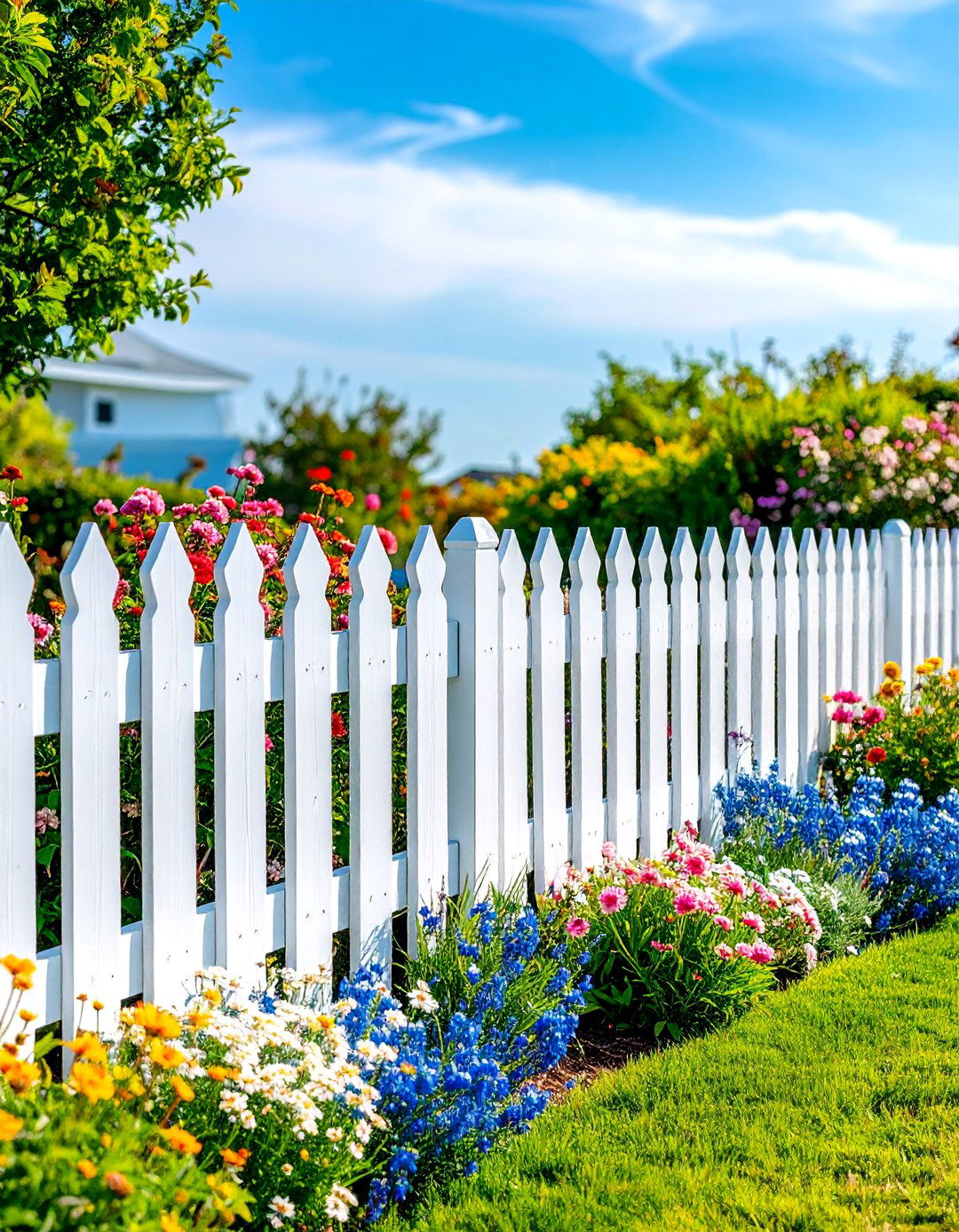
Creating sheltered gardens by planting coastal-tolerant evergreen hedging provides good climate for other plants while offering excellent privacy. Select species that thrive in salt air rather than merely tolerating it. Hedge plants suitable for coastal conditions include hawthorn, box, berberis, holly, salt cedar, sea buckthorn, willow and forsythia. Plants with thick, shiny, waxy leaves like Euonymus japonicus, griselinia and Oleaeria traversii work well as coastal hedges. Plant mixed hedgerows for ecological value and visual interest throughout seasons. Traditional hedgerows using local species like sloe and hawthorn provide wildlife shelter while filtering wind effectively. Design varying heights to create layered protection. Escallonia and laurel provide excellent backup hedging behind primary windbreaks, creating multiple tiers of protection for sensitive plants.
17. Coastal Garden Beach Furniture Arrangement
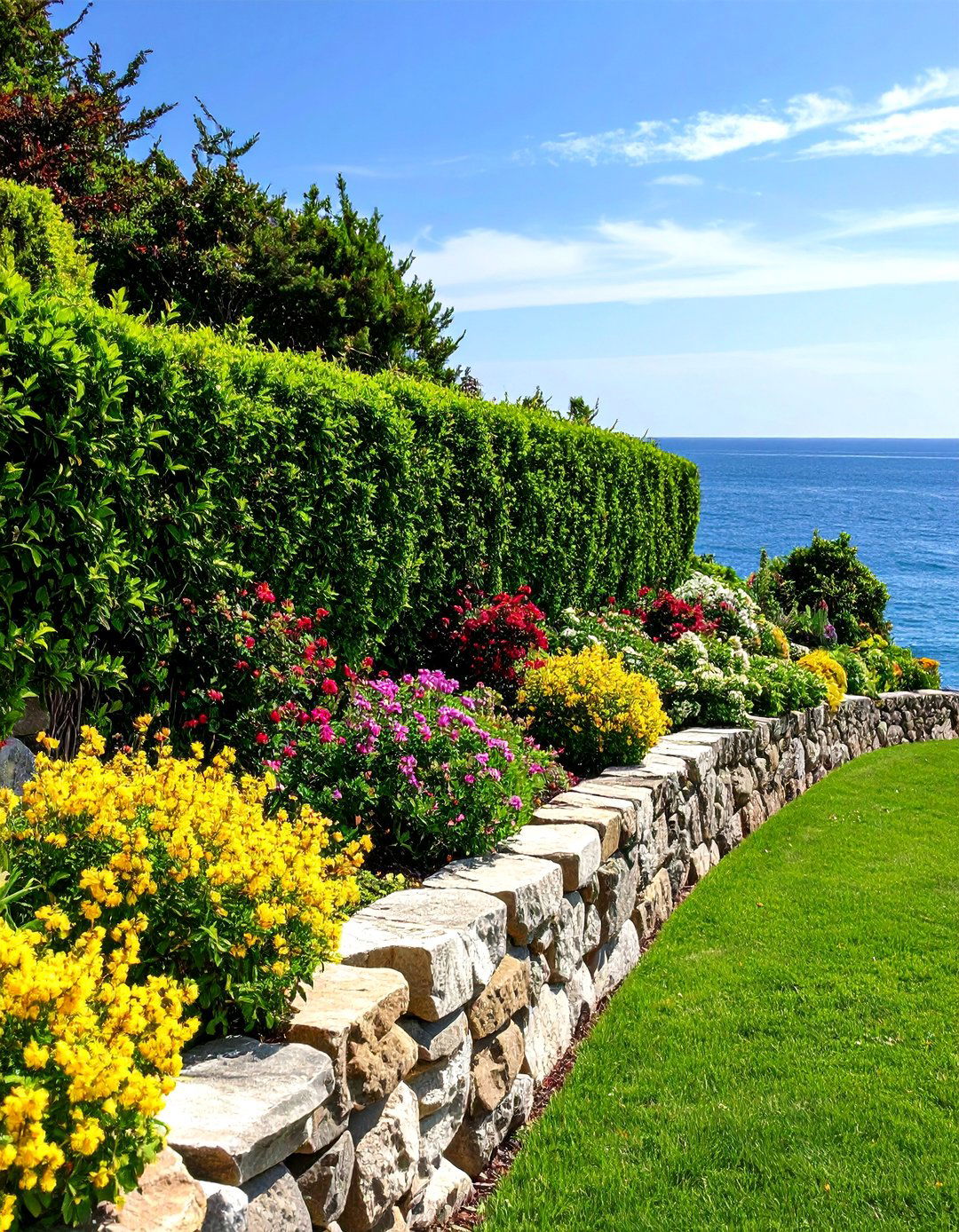
Adirondack chairs capture the essence of beach gardens, being resistant to wind, water, and rust for year-round outdoor use. Choose furniture materials that complement coastal aesthetics while withstanding harsh conditions. Select coastal-themed furniture like Adirondack chairs or beach umbrellas using weather-resistant materials like teak or composite. Teak or rattan seating naturally weathers beautifully over time, while hammocks and hanging chairs reinforce laid-back, breezy aesthetics. Create multiple seating areas for different activities and times of day. Install hammocks between tree trunks or pergolas, or use freestanding hammock systems in shaded areas. Build wind-sheltered seating areas using stone or reclaimed wood for built-in benches with cushions. Position furniture to take advantage of views while providing protection from prevailing winds.
18. Coastal Garden Storm-Resistant Plant Selection
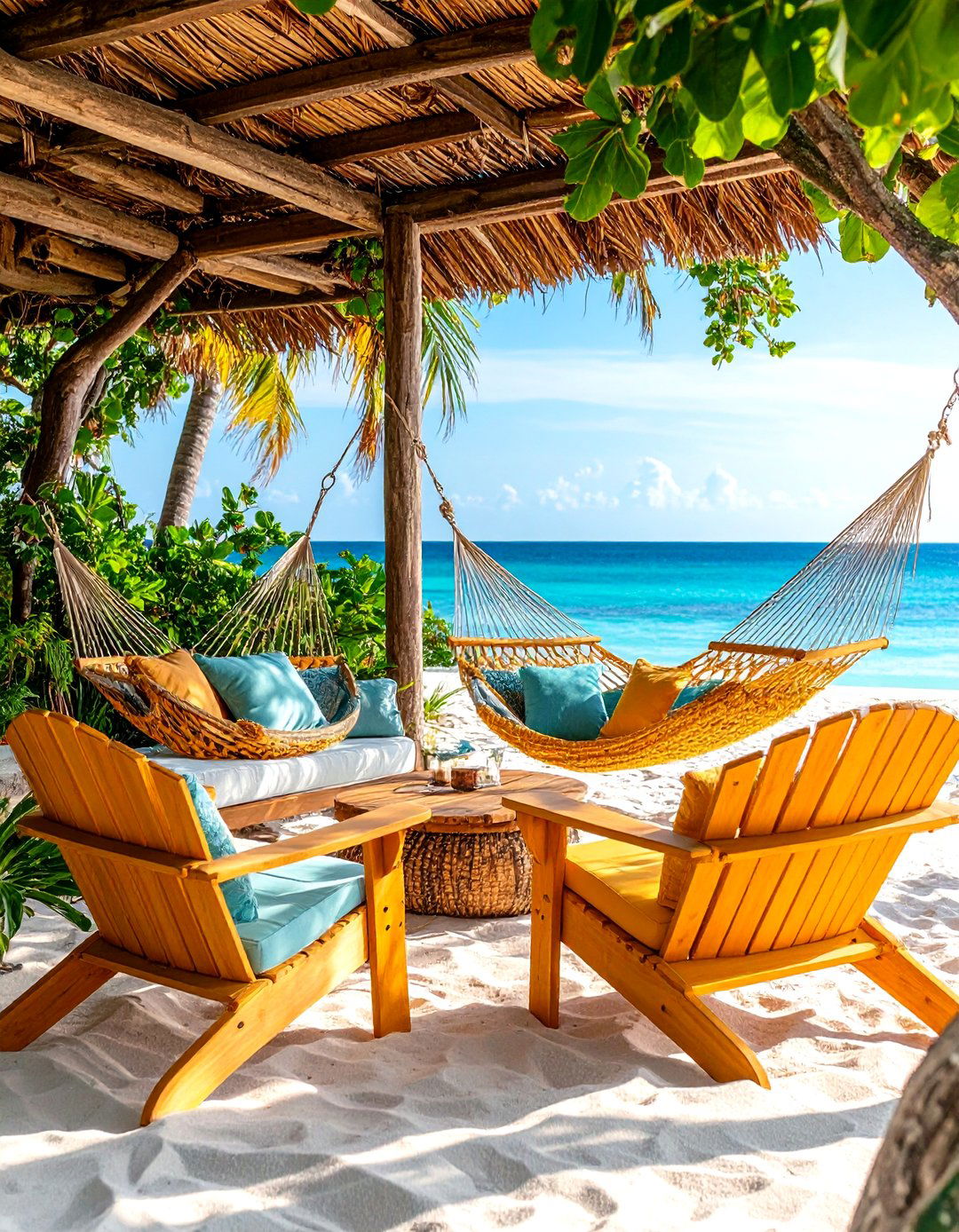
Storm-resilient coastal plants are set to enjoy the spotlight, with tough, tolerant varieties that withstand stormy weather conditions. Choose plants with specific adaptations for extreme weather survival. Crambe maritime has long tap roots that anchor against strong winds, with waxy surfaces protecting from drying effects. Sedum acre conserves resources to absorb storm water, while Pinus sylvestris 'Watereri' has needle-like leaves reducing water loss and preventing tearing. Focus on species with flexible stems that bend rather than break. Select plants with dense foliage that reduces wind speed at ground level while providing shelter for delicate plants. Deep root systems anchor plants securely, making them less susceptible to being uprooted during storms. Plant in groups for mutual protection and support.
19. Coastal Garden Sand Dune Recreation
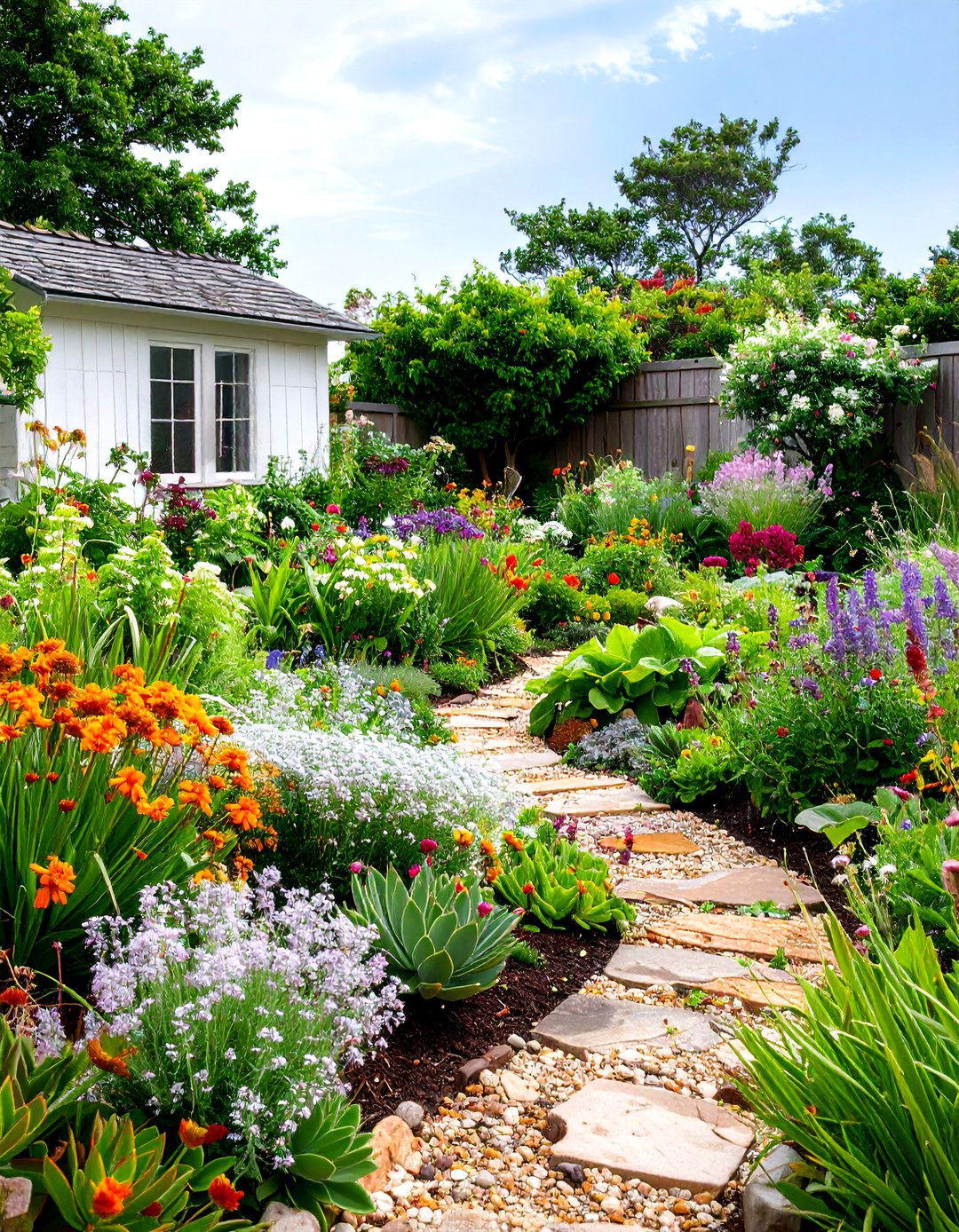
Create pockets of sandy areas reminiscent of beach dunes, adorned with dune grasses, driftwood, and beach chairs. Design naturalistic mounds using clean sand mixed with organic matter for plant establishment. Use dune grass Ammophila arenaria, Stipa tenuissima or S. gigantea to stabilize sloping sandy sites. Think dunes when incorporating grass areas, moving away from immaculate green lawns toward naturalistic coastal grasslands. Plant with native species that naturally colonize coastal dunes for authenticity. Sea oats play crucial ecological roles in dune stabilization, with extensive root systems holding sand in place. Create gentle undulating topography that mimics natural coastal formations. Add coastal plants that grow in crevices, such as sea campion and sea thrift, for splashes of pink and white color.
20. Coastal Garden Maritime Art Installation
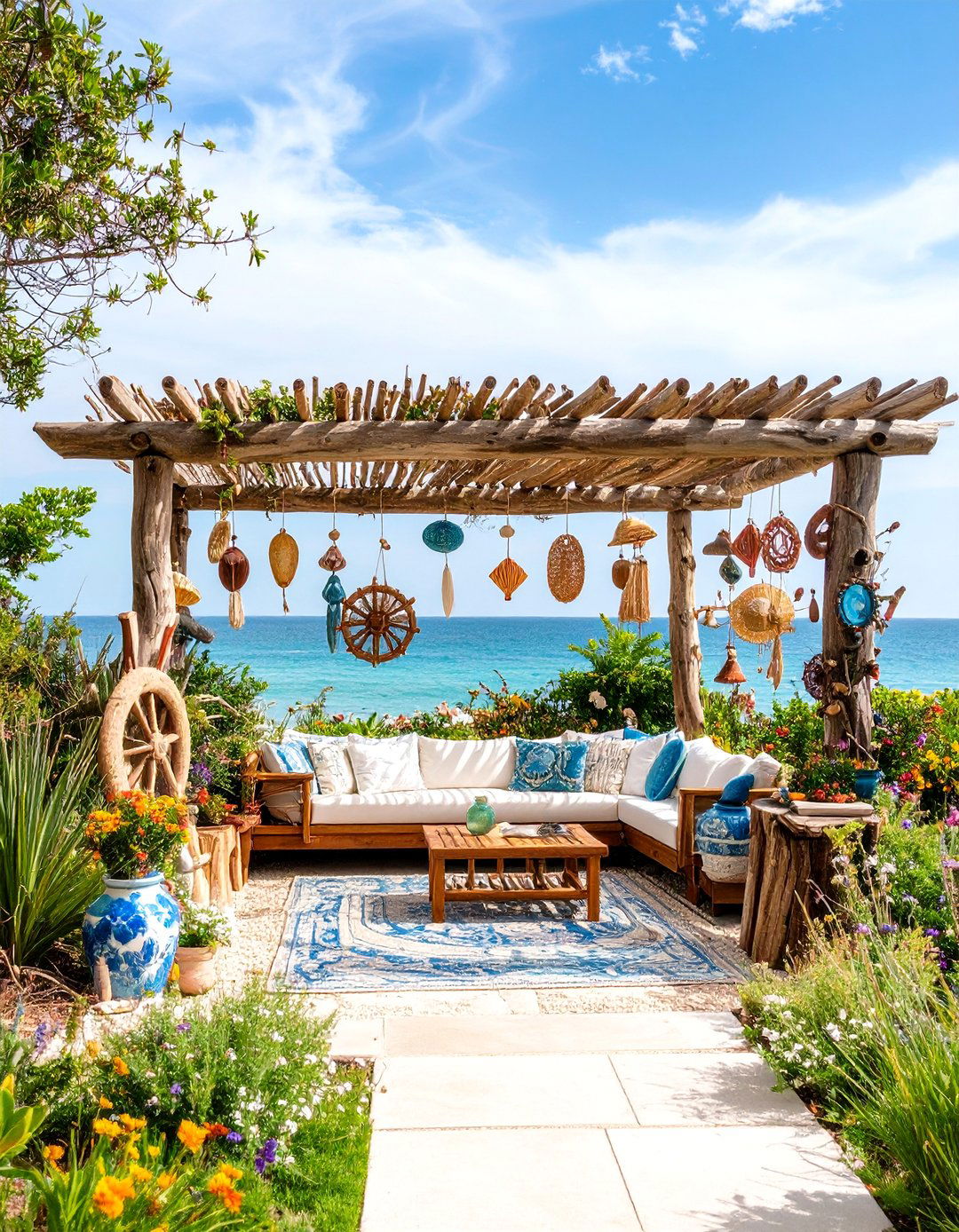
Incorporate art into coastal gardens to enhance allure, evoking maritime charm with personal touches like driftwood sculptures, mosaic stepping stones, and nautical murals. Create focal points using found objects and maritime artifacts that tell coastal stories. Craft seashell wind chimes and beach glass art, with frosted beach glass formed over time by tides. Position sculptures like dolphins or sea turtles made from weathered wood or stone near garden paths or water features. Add maritime signage or flags that guide visitors through gardens or tell tales of distant shores. Paint fences or walls with beach scenes using weather-resistant paint, such as nautical murals showing sunset over ocean. Incorporate nautical ropes or knots as unique functional design elements for borders, barriers, or artistic installations. Use salvaged maritime equipment like lobster pots, buoys, and anchors as sculptural elements.
Conclusion:
Creating successful coastal gardens requires embracing the unique challenges and opportunities of seaside environments. These twenty coastal garden ideas demonstrate how thoughtful plant selection, appropriate materials, and strategic design can transform harsh coastal conditions into stunning outdoor spaces. By incorporating storm-resistant plants, natural materials, and maritime elements, you can develop gardens that not only survive but thrive in salt air and strong winds. The key lies in working with nature rather than against it, choosing solutions that improve with age and weather naturally. Whether implementing windbreaks, designing gravel pathways, or creating driftwood features, each element contributes to a cohesive coastal aesthetic that celebrates the raw beauty and resilience of seaside living.


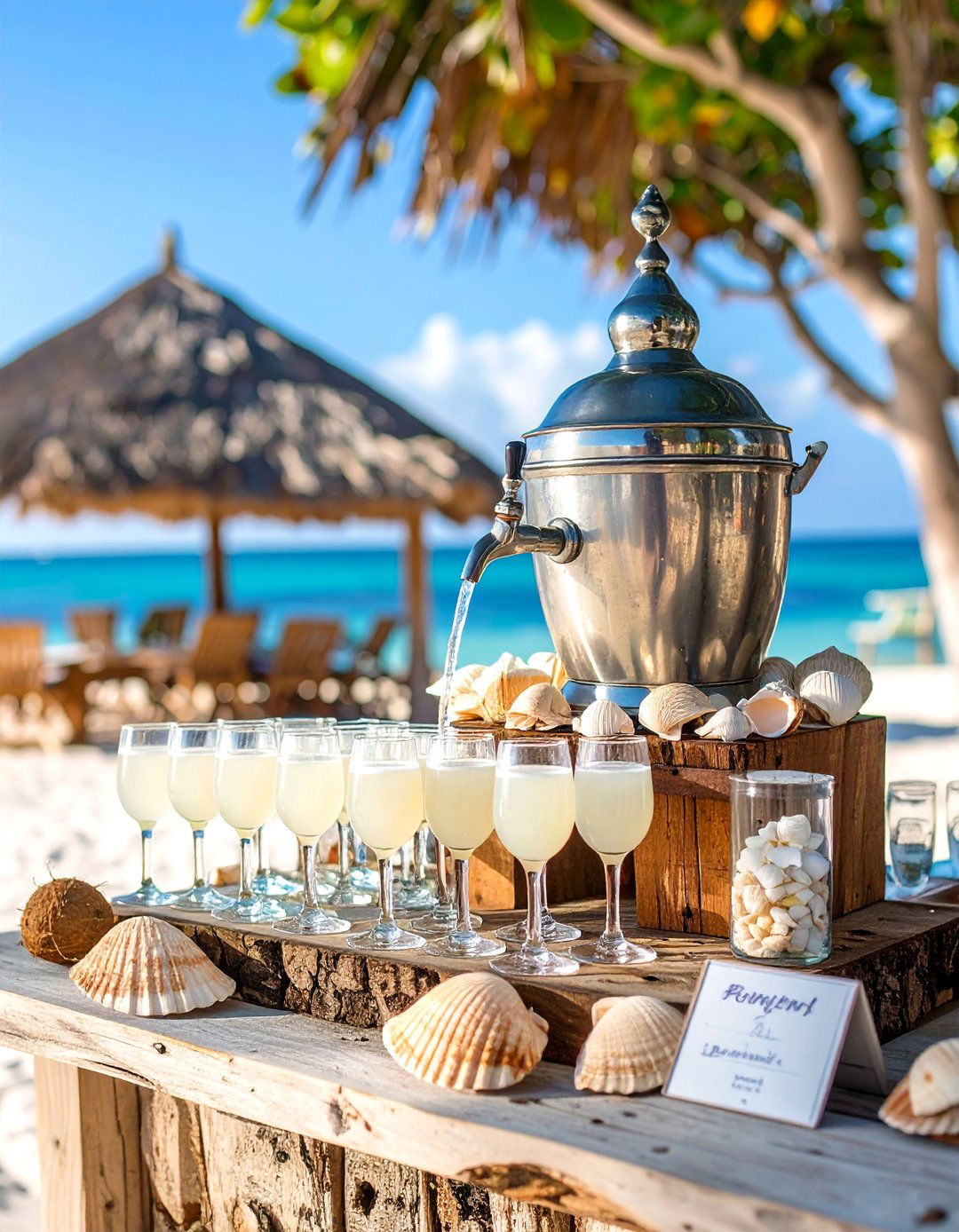
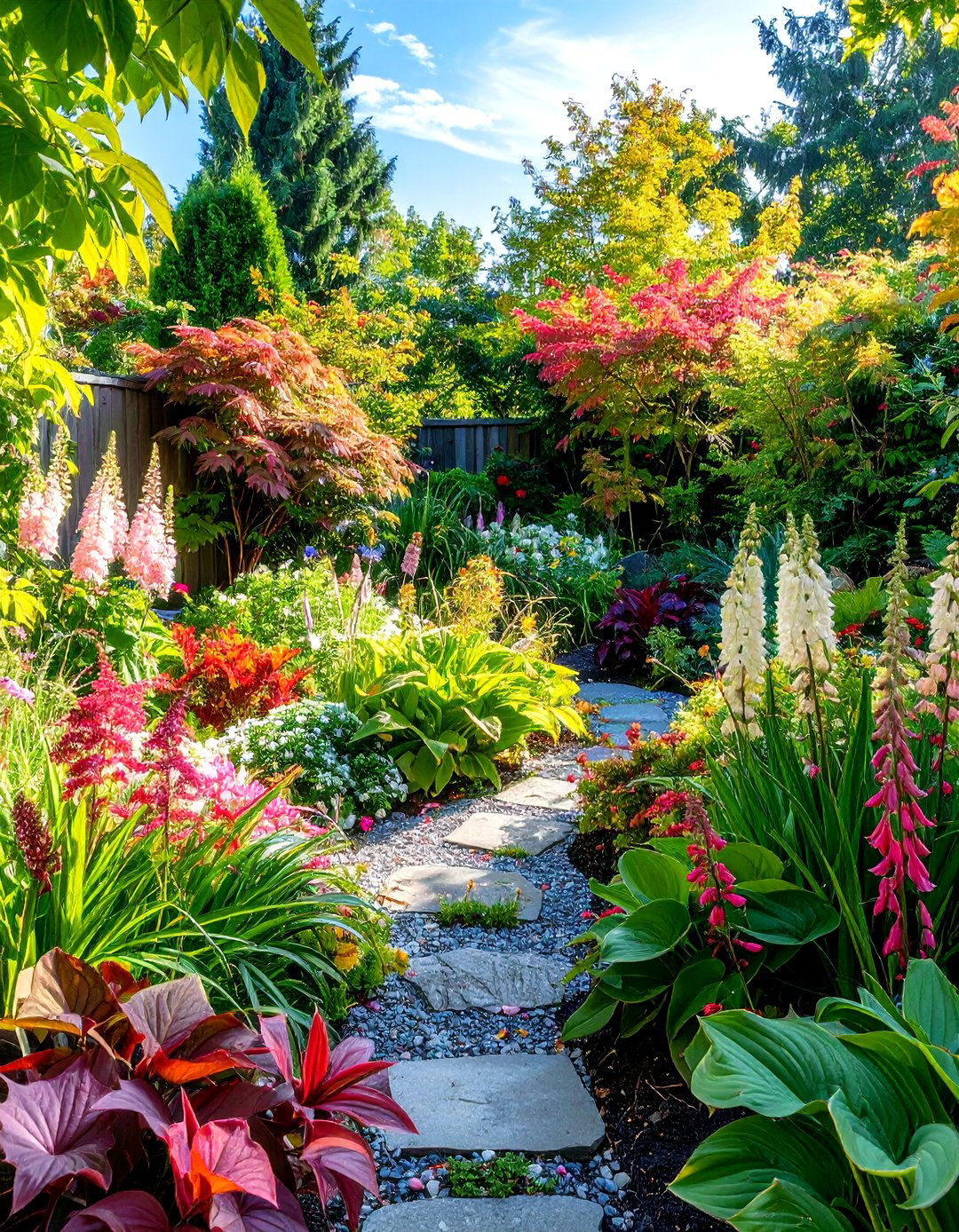

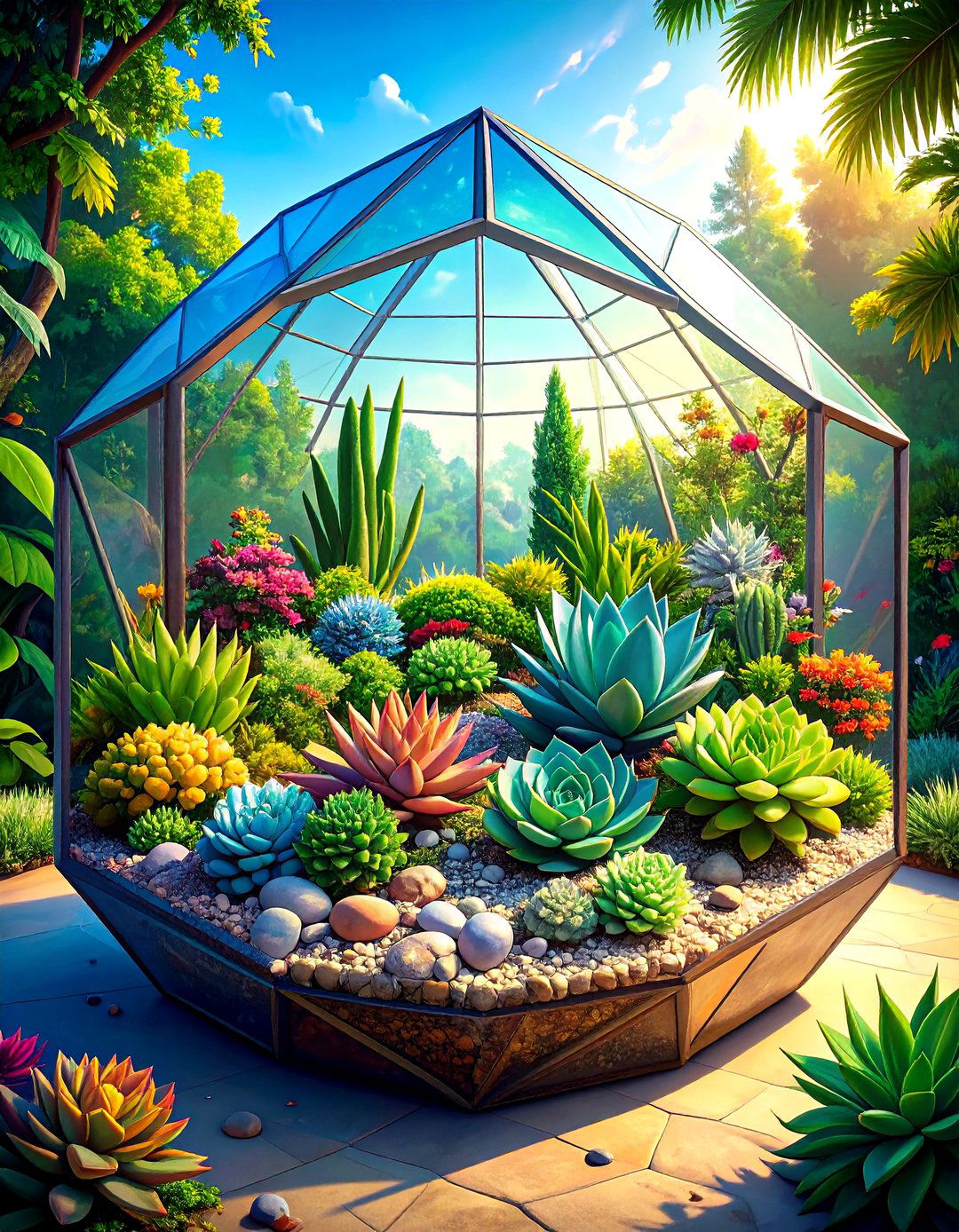

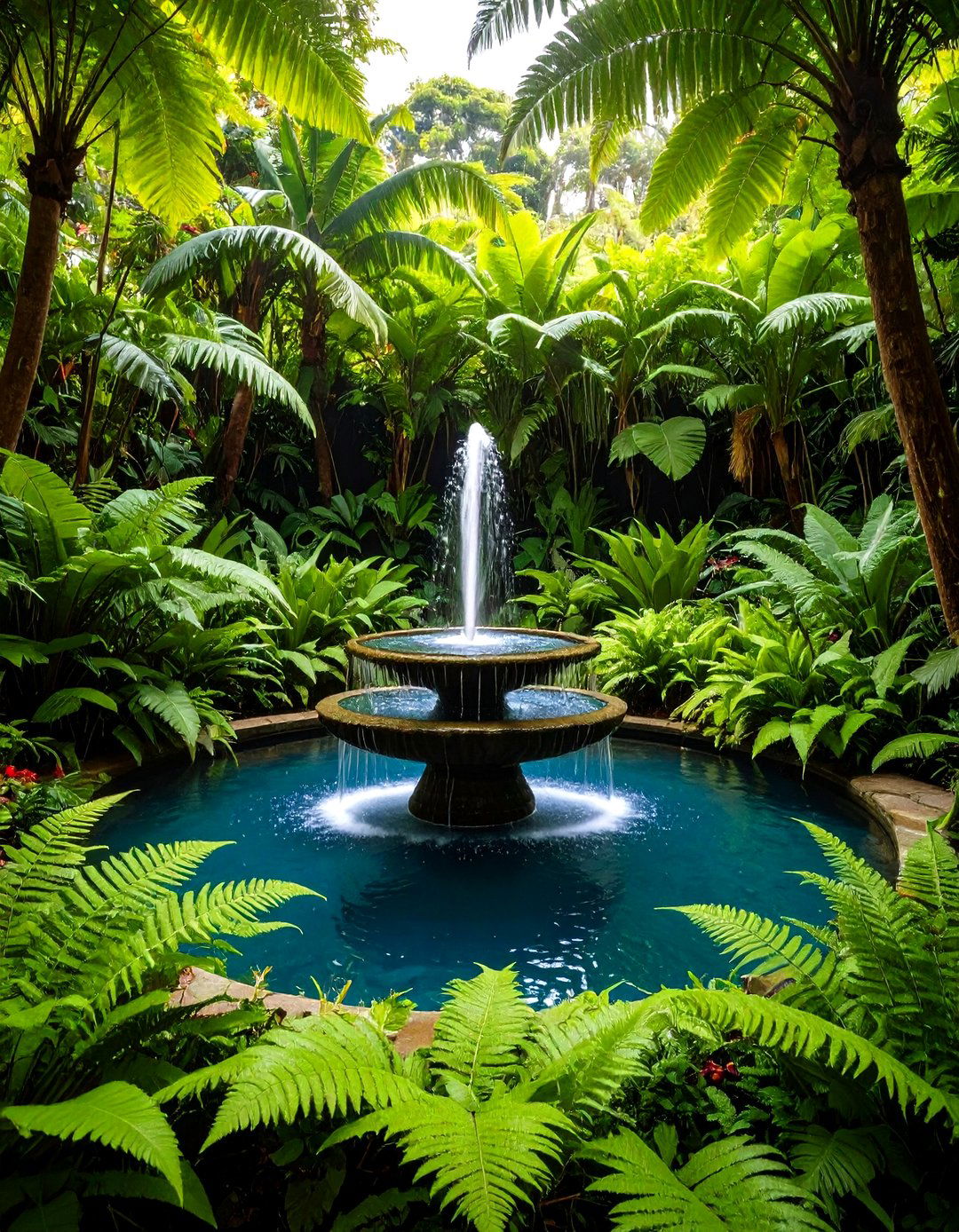
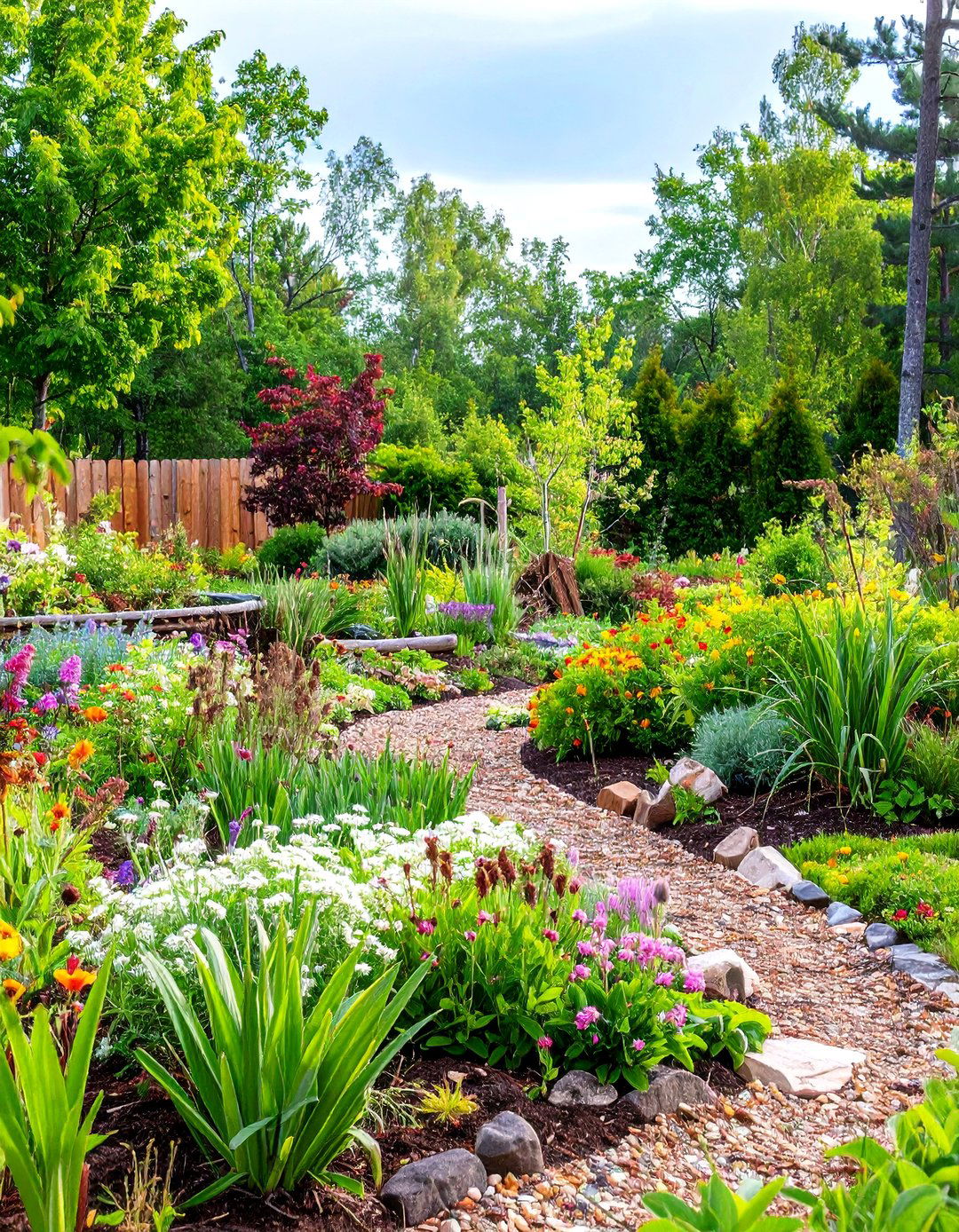
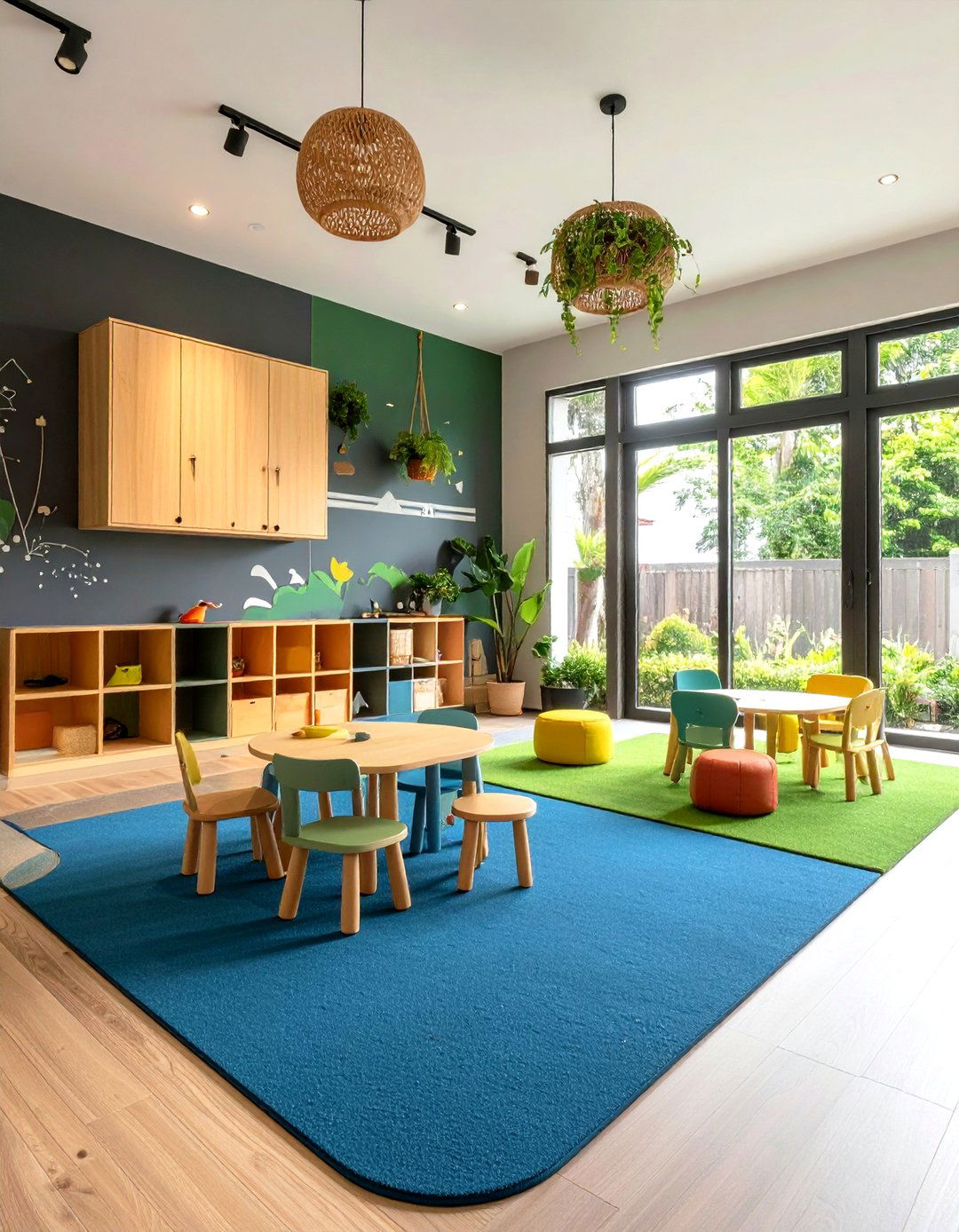

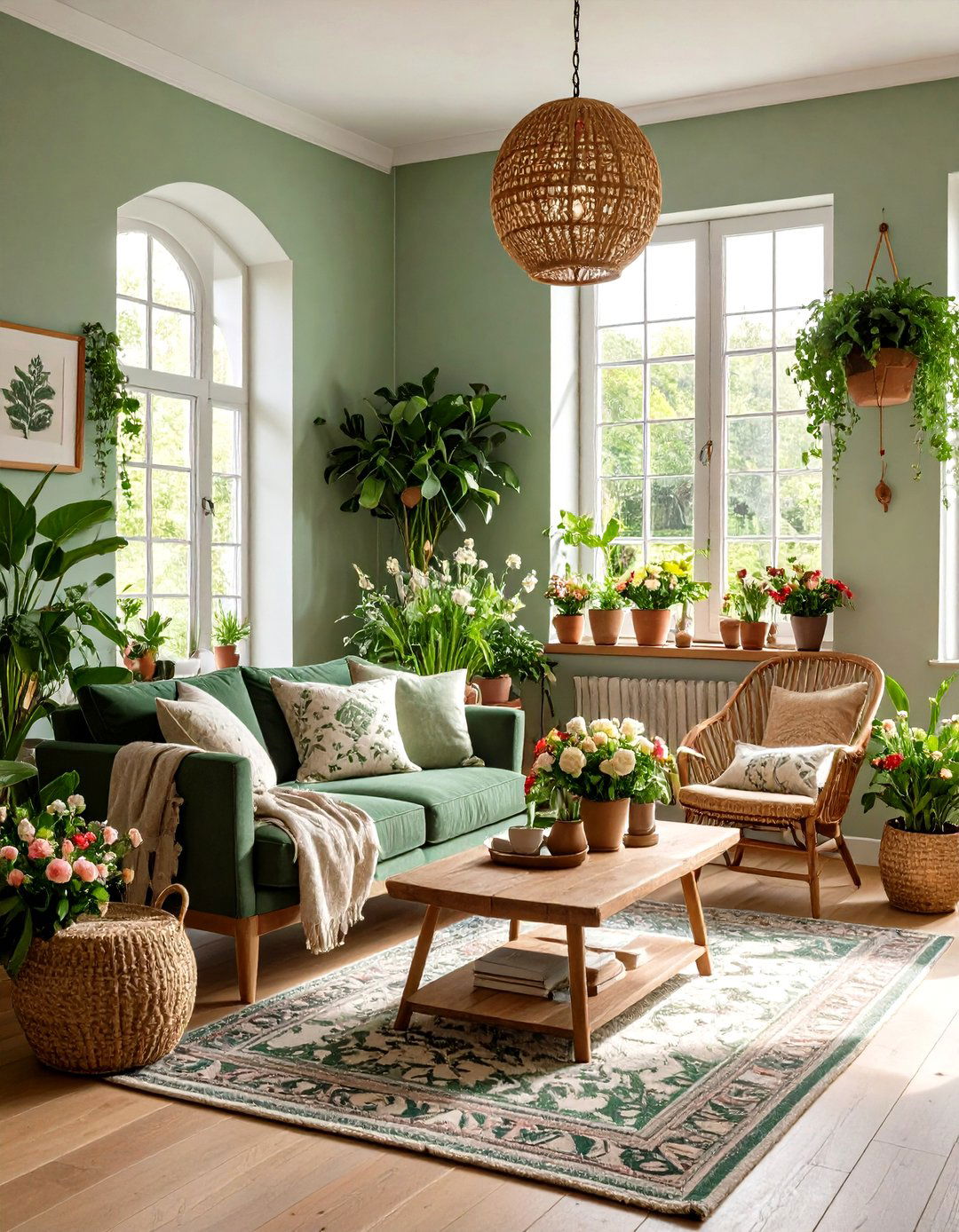

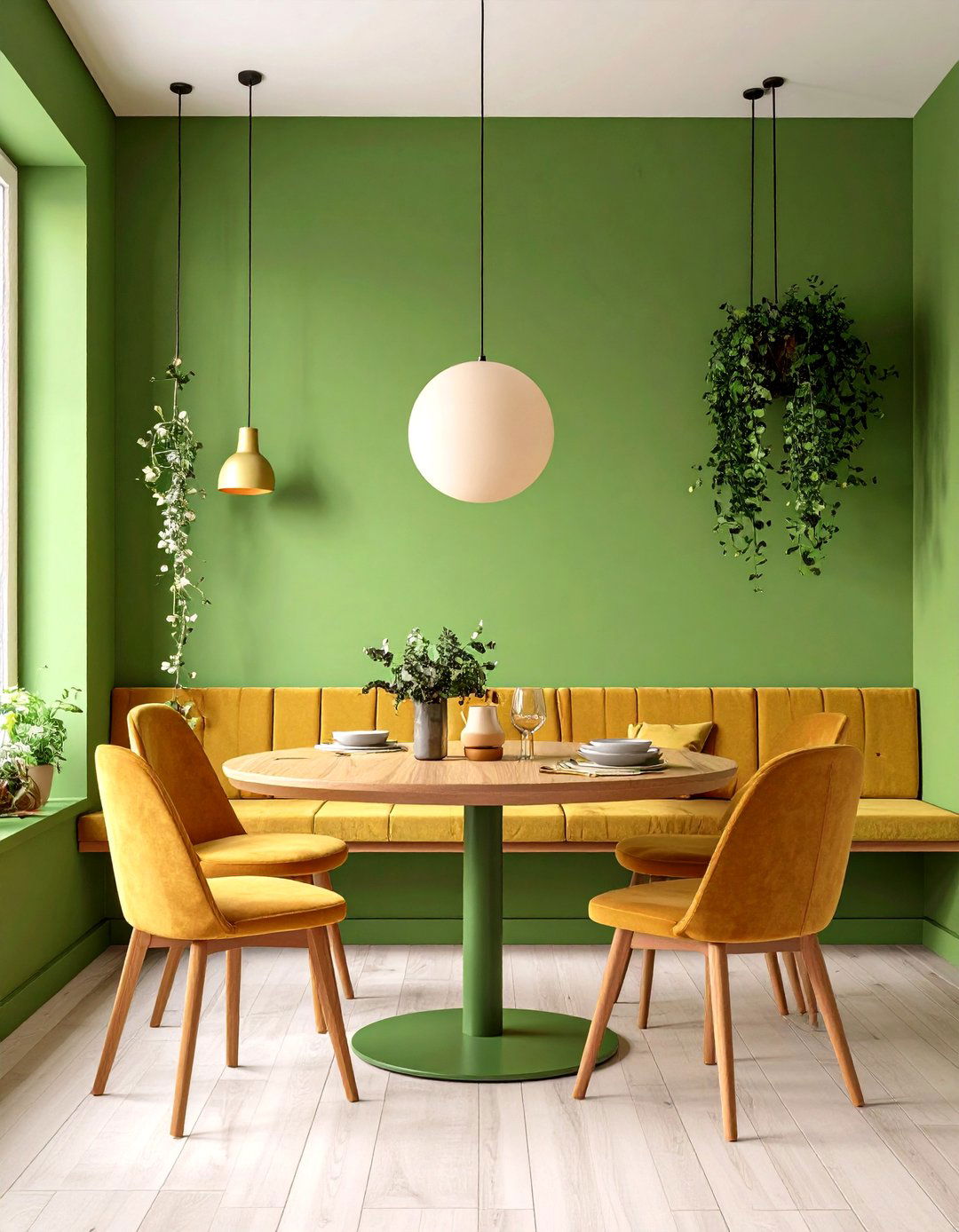



Leave a Reply